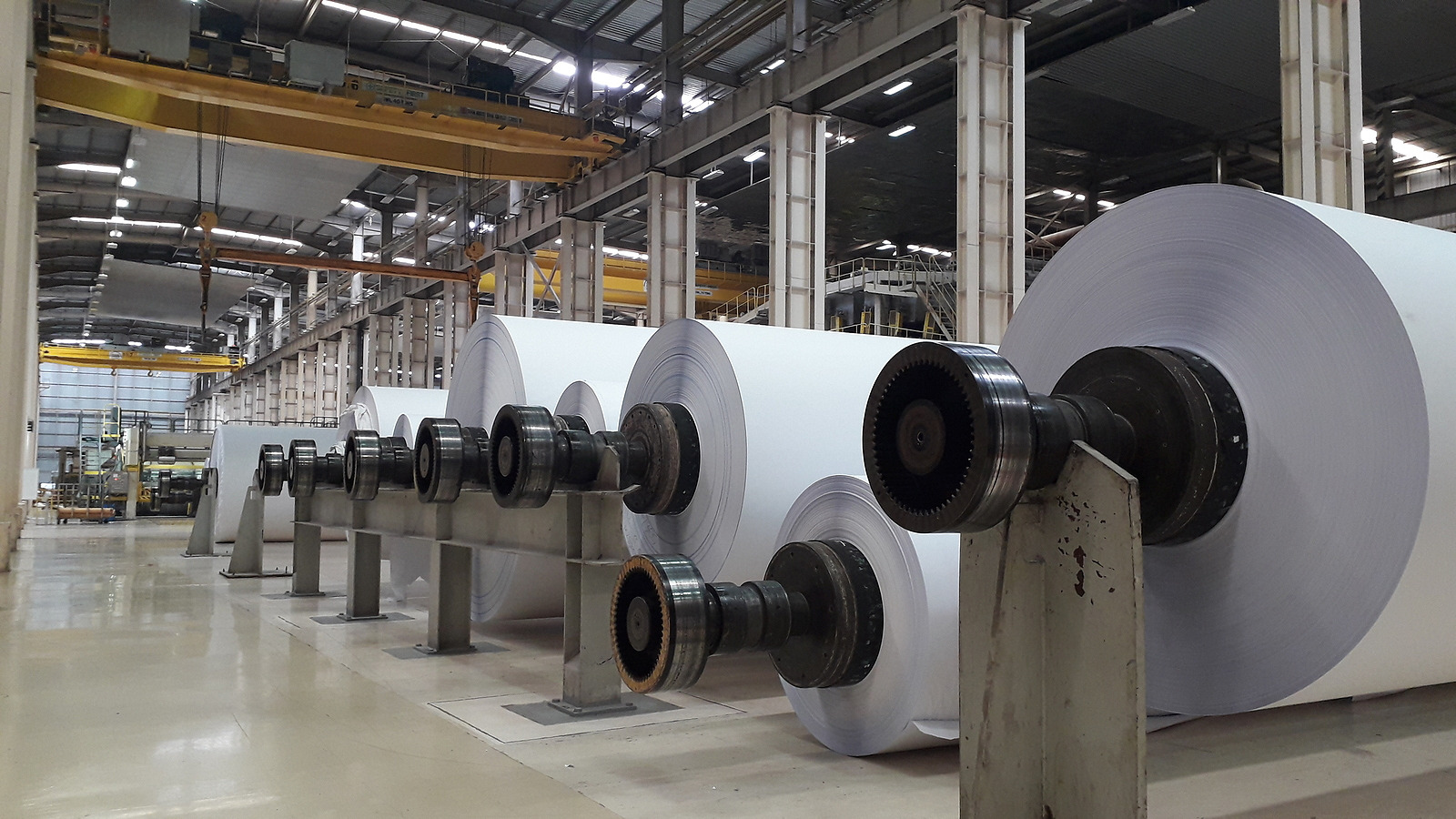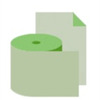عنوان ماژول
توضیحات ماژول در این قسمت قرار میگیرد




Scroll Down





Over the centuries, paper has been made from a wide variety of materials such as cotton, wheat straw, sugar cane waste, flax, bamboo, wood, linen rags, and hemp. Regardless of the source, you need fiber to make paper. Today fiber comes mainly from two sources — wood and recycled paper products.
Paper mills differ in their processes based on the source of fiber used and the end product produced. There are three basic types of mills:
Pulp mills make pulp, a mixture of cellulose fibers and water used as the basis of all paper products. Pulp is made in several ways, depending on the type of paper being produced. Wood chips, which come from logs or from residues from sawmills, furniture manufacturers and other sources, can be chemically or mechanically separated into individual wood fibers in a process called pulping.
In chemical pulping, the most common pulping process in the United States, the wood chips are “cooked” in a digester at an elevated pressure with an appropriate solution of chemicals to dissolve the lignin (the “glue” that binds the fibers in the wood) and allow the cellulose fiber bundles in the wood to separate into individual cellulose fibers. Since chemical processing is gentle on the cellulose fiber, chemical pulps tend to have longer fibers and make strong paper such as printing and writing papers and paperboard.
In mechanical pulping, chemicals are not used to remove the lignin in the wood chips. Instead, wood chips are pressed against a grinder that physically separates the fibers. Mechanical pulps have shorter fiber lengths and produce papers which do not require as much strength — such as newsprint.
After the fibers have been separated, the mill washes and decontaminates the pulp. To produce a white paper product, the mill must bleach the pulp to remove color associated with remaining residual lignin. Typically, the bleaching chemicals (such as chlorine dioxide, oxygen, or hydrogen peroxide) are injected into the pulp and the resulting mixture is washed with water.
The bleached or unbleached wood pulp — which at this point is in a very dilute slurry — is then pumped onto rolling wire screen mats that vibrate slightly to allow water to drain out of the pulp and to help the fibers interlock into sheets. By varying the amount of pulp pumped onto the rolling mats, the speed of the mat, and the speed of the vibrations, paper with different qualities and properties can be achieved. The sheets then pass through a long series of rollers that press out any remaining moisture, followed by steam-heated drums that dry the paper. Finally, a process called calendaring polishes the sheets and smoothes out wrinkles. Large sheets of paper are wound onto rolls and can then be cut to produce a variety of paper products.
 Recycled Paper Processing Mills
Recycled Paper Processing Mills Recycled paper processing mills use paper as their feedstock. The recovered paper is combined with water in a large vessel called a pulper that acts like a blender to separate fibers in the paper sheets from each other. The resultant slurry then passes through screens and other separation processes to remove contaminants such as ink, clays, dirt, plastic and metals. The amount of contaminants that are acceptable in the pulp depends upon the type of paper being produced. Mechanical separation equipment includes coarse and fine screens, centrifugal cleaners, and dispersion or kneading units that break apart ink particles. Deinking processes use special systems aided by soaps or surfactants to wash or float ink and other particles away from the fiber.
Recovered fiber can be used to produce new paper products made entirely of recovered fiber (i.e. 100 percent recycled content) or from a blend of recovered and virgin fiber. Fiber cannot, however, be recycled endlessly. It is generally accepted that a fiber can be used five to seven times before it becomes too short (as a result of repulping and other handling) to be useable in new paper products. Recovered paper with long cellulose fibers (such as office paper) has the greatest flexibility for recycling as it can be used to produce new paper products that use either long or short fibers. Recovered paper with short cellulose fibers (such as newspaper) can only be recycled into other products that use short cellulose fibers. For this reason, recovered paper with long fibers is generally of higher value than recovered paper with short fiber.
 Mills that Use Both Recycled and Virgin Fiber
Mills that Use Both Recycled and Virgin Fiber Some mills use both recycled and virgin fiber to make paper. These mills are typically set up to process virgin wood into pulp and incorporate recovered fiber by buying bales of recycled pulp which are added to the wood pulp. Customer demand, environmental awareness, and economics are some of the reasons mills add recovered fiber to their products.
 A long-term experience in the global market.
A long-term experience in the global market. Our long-term experience in the field enables us to develop customized products by tuning the properties of our papers to suit customers’ needs in terms of converting and performances.
 Logistic and delivery
Logistic and delivery The advanced logistic system enables the production department and shipping department to handle and manage the orders and supplies with ease, thus improving times and warehouse management with substantial economic advantages for our end customers.
 Financial service
Financial service Fully aware of the financial commitment that customer must sustain when purchasing large quantities or paying in hard currency, Cartonal offer its customers lines of credit and short and long term payment plans to make it easier to do business.
 42
42  32
32  13
13  13
13  G.A. Paper Specializes in Trade with Emerging Markets
G.A. Paper Specializes in Trade with Emerging Markets
Our extensive experience in developing markets has allowed us to navigate and overcome their unique challenges. This gives our suppliers the opportunity to participate in these markets with minimal financial risk, while also providing our customers access to products that may not readily be accessible in their local markets.
ACTIVE IN 56 COUNTRIES